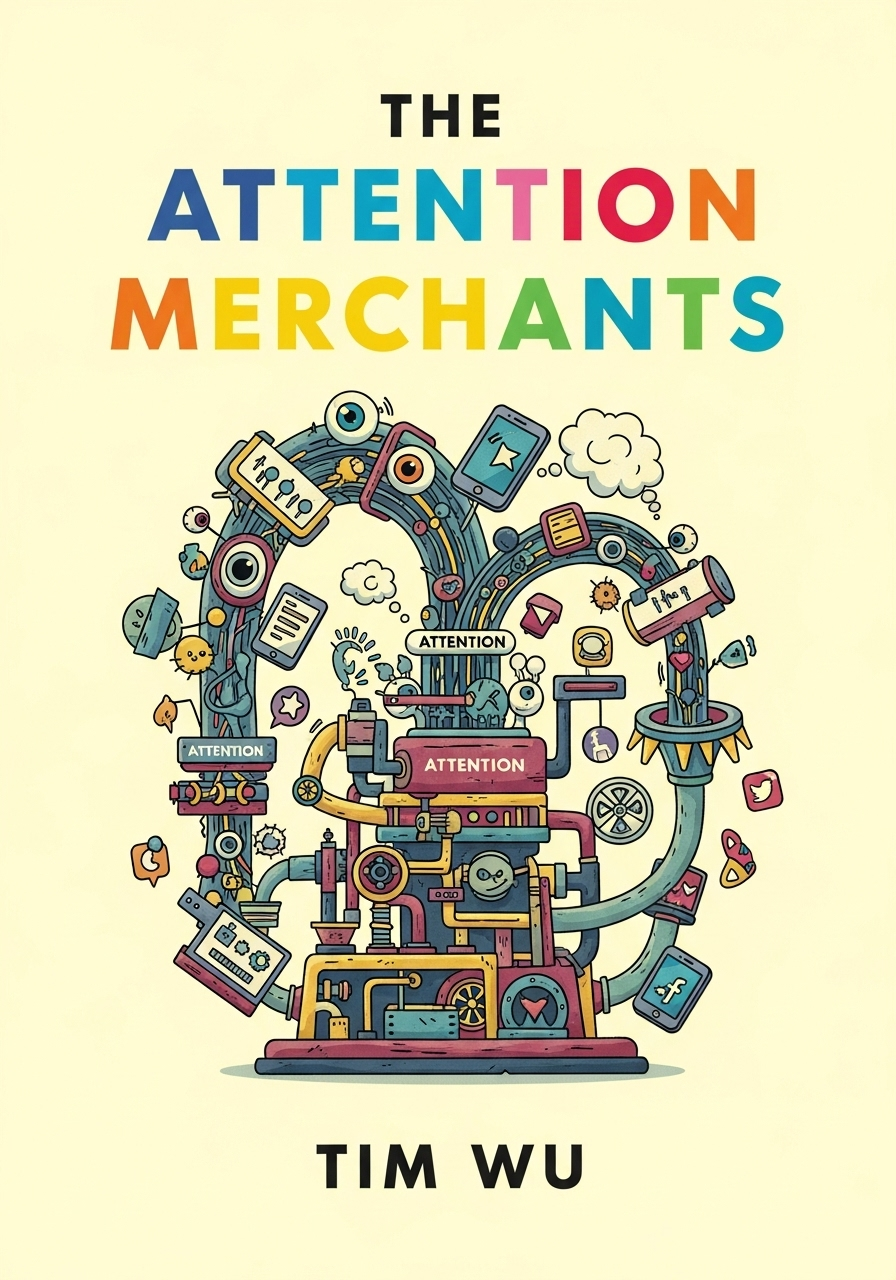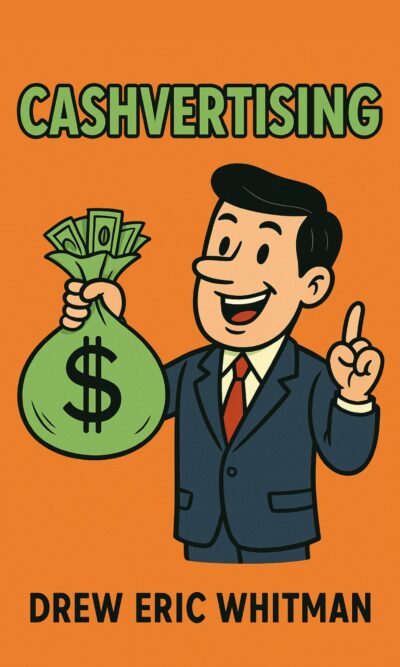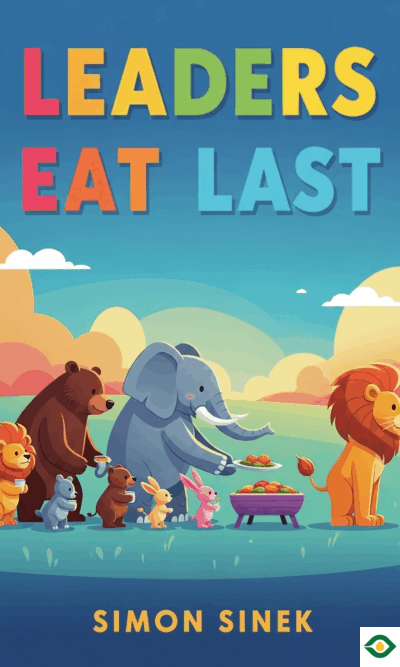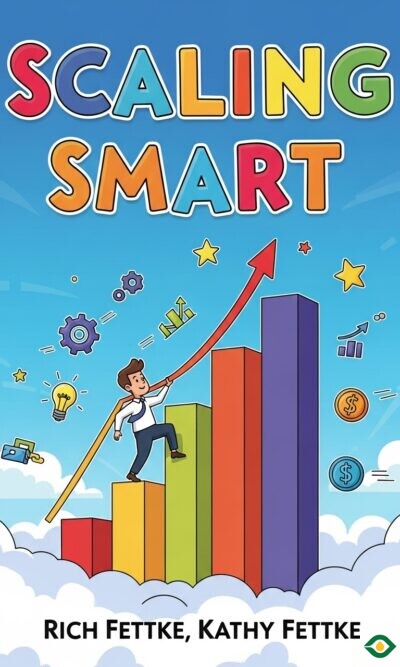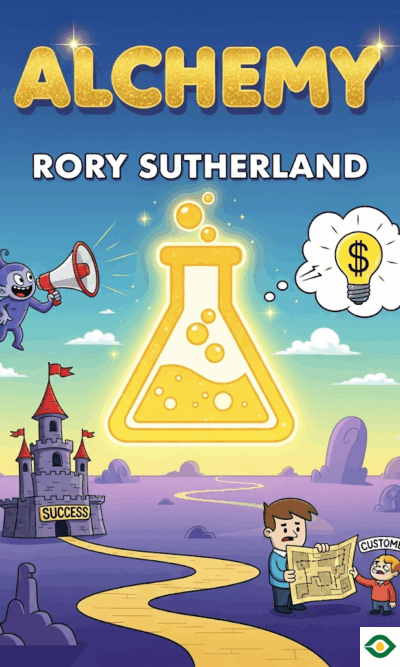Description
Imagine walking down the street and not being surrounded by advertisements—no posters, no billboards, no pop-up ads on your phone. It feels almost impossible to picture, because advertising has become part of the air we breathe. Everywhere we look, something or someone is trying to grab our attention. That attention is then sold to businesses that want to persuade us to buy their products or services. This is the story at the heart of The Attention Merchants—how human attention became a valuable commodity, shaped and traded across centuries.
The idea of capturing attention for profit isn’t new. Early newspapers once contained simple, factual notices—like lost-and-found announcements or job postings. These weren’t persuasive, just practical. Then, in 1833, Benjamin Day launched the New York Sun. He sold his paper for a single penny, far cheaper than competitors. To make money, he relied on advertisements. Businesses paid to appear in his widely read paper, and before long, the model exploded. Day showed that media could sell not just news, but the attention of its readers. From that point forward, attention itself became a product.
As advertising matured, some people used it to exploit human hopes and fears. In the early twentieth century, a man named Claude Hopkins mastered the art of persuasive advertising. He worked with patent medicines—products that promised miracle cures but often did little at all. Hopkins invented techniques like direct mail and free samples, drawing millions of customers. Even though the medicines rarely worked, the ads were powerful enough to generate enormous profits. Around the same time, governments realized the same tools could rally citizens. During World War I, Britain used posters and campaigns to recruit millions of men into its army. Advertising had proven itself not just a way to sell goods, but a way to shape nations.
After the war, the business of persuasion became more organized. Advertisers embraced what they called “scientific advertising.” The idea was that persuasion could be carefully designed, tested, and repeated. A striking example came from Listerine. Few people worried about bad breath until the company promoted the medical-sounding word “halitosis.” Suddenly, millions were convinced they had a serious social problem. Sales exploded, and the company’s revenue grew astronomically. This era also gave birth to branding. Rather than waiting for years to earn a reputation, companies realized they could create one through stories and symbols. Cadillac, for example, used advertising to portray itself as the very definition of luxury. The brand became more than a car; it became a status symbol.
The twentieth century brought new technologies, and with them, new ways to capture attention. Radio became the first medium that piped advertising directly into people’s homes. Sponsors funded shows, music, and serials in exchange for access to listeners’ ears. One famous example was Amos ’n’ Andy, a radio program sponsored by Pepsodent toothpaste. The show attracted millions of listeners, and the brand’s sales skyrocketed. Television then took things further. By the 1950s, most American households owned a TV, and families spent hours every day glued to the screen. Advertisers now had a direct line to the nation’s living rooms.
But attention didn’t stop migrating. By the late twentieth century, the internet arrived. At first, it was clunky and used mainly by researchers. Then email transformed it into a powerful tool for connection—and a powerful tool for advertisers. Psychologists noted that emails acted like rewards: every new message offered a small thrill. This kept people glued to their inboxes, always waiting for another little surprise. Advertisers quickly learned to take advantage of this behavior.
As the internet matured, search engines became essential. Google rose above competitors because it made information easy to find. But running such a service cost money, and the company had to figure out how to pay for it. Its founders wanted to avoid filling the screen with noisy, irrelevant ads. Instead, they created Adwords, a system that displayed advertisements closely related to what users were actually searching for. This innovation turned Google into one of the most successful companies in the world, built on harvesting and selling attention in a way that felt seamless to users.
Yet one of the most powerful attention magnets has never been a technology at all—it has been celebrities. From early movie stars to today’s influencers, famous people capture our imagination in ways that ordinary advertising cannot. Entire industries have grown around celebrity culture, from glossy magazines to reality television. Even people who claim not to care about stars still recognize their faces and names. The fascination often borders on worship, suggesting that humans are wired to give special attention to those seen as extraordinary.
Looking across history, a clear pattern emerges: whenever a new medium arises—whether newspapers, radio, TV, email, or social media—advertisers rush in to capture the attention flowing through it. Attention merchants adapt to every change in technology and culture. Their goal remains the same: hold your gaze, shape your thoughts, and then sell that moment of attention to someone else.
The story of advertising is not just about businesses. It’s also about us, the audience. We live in a world where our attention is constantly being courted, packaged, and sold. Every poster we pass, every video we stream, every feed we scroll is part of this system. Understanding how it works allows us to step back and make choices. We can begin to ask: who deserves our attention? Where do we want to spend it? And how can we protect it from being endlessly harvested?
The Attention Merchants shows that attention has always been valuable. From penny papers to Google searches, from toothpaste ads to celebrity worship, people have always found ways to turn attention into profit. But as our lives grow more crowded with messages, we are reminded of a simple truth: attention is limited. What we choose to give it to may be the most important decision we make each day.

